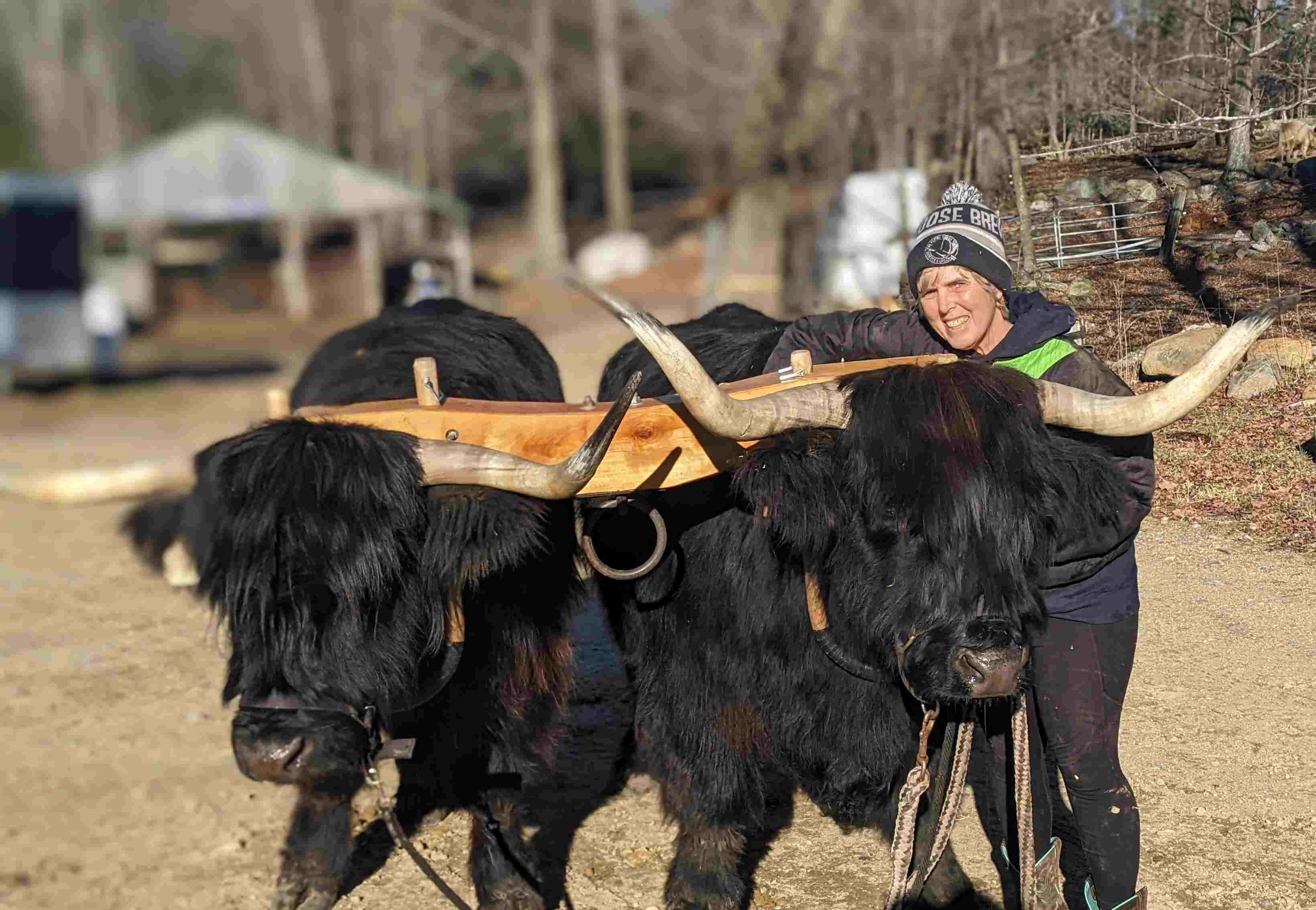Coyotes Are Scary Neighbors
posted on
February 11, 2024
Coyotes are opportunistic feeders and shift their diets to take advantage of the most available prey, including small rodents, fruit, deer, rabbit, and, in this story, composting cow. One reason coyotes howl is to warn other coyote family groups against trespassing. Another reason is to call the pack back together after a period of individual hunting. Usually, there is nothing to be concerned about when you hear them calling.

Words of wisdom from Cow-Flipper Carole: Whatever happens to me today is meant to be.
We have coyotes. We hear them at night, howling to advertise their presence to other packs, claiming their territory – the woods on Miles Smith Farm. I picture them, black eyes shimmering in the moonlight as they yowl and yip in a wave of sound. Sometimes, I try to count the voices: the high-pitched yipping, yapping, and barking. It sounds like a dozen of them, but I think only four voices are creating the frightening symphony. I’ve been told by those who should know that noisy coyotes are good coyotes. When they go quiet, dogs, cats, and rodents should fear for their lives.
I’ve inadvertently given them something to howl about. As you know, sometimes cattle die unexpectedly. Digging a hole is the traditional way to dispose of the carcass. But the frozen ground has defeated our backhoe.
Composting Recipe
It turns out that in-ground burying is not the most environmentally sound practice. Once buried, decomposition stalls because it requires warmth, moisture, and air.
After a beloved cow died, we followed a recipe for composting, which included burying the carcass in a mound of wood chips. The chips allow air to get to the body, generate heat to speed the process, and allow moisture to seep through.
But it’s winter, coyotes are hungry, and wood chips are easy to dig through.
At first, we heard the coyotes but didn’t see them. We knew they were there because, usually at 2 a.m., my two dogs would get excited, wanting to get out to confront the intruders. Every morning, husband Bruce drove the Mahindra tractor to the composting pile to fill the tunnel the coyotes had dug.
Traps
Then, one morning, I saw the pack leader—a majestic, silvery-gray coyote standing atop the pile.
Although he was twice her size, my dog Flora took after him, barking. I watched silently, afraid that if I called her back, she’d get distracted, and the coyote would turn and attack her. She was 10 feet behind him as he ran behind a hill, out of my sight. I winced, expecting to hear yelps of pain and to see her limping up the road, a bloody mess. But farmworker Matt, who had been closer to the action, saw the coyote stop and turn to look at Flora, who had second thoughts about the chase. Then she ran back to me, unharmed.
This was too much; these coyotes had crossed a line. They were out during the day, and if they developed a taste for cow, maybe my 13 weaning calves were in danger. The coyotes had to go.
First, I called the USDA wildlife number and confirmed that I could kill or trap a nuisance animal threatening my livestock.
A local trapper helped us put out leg traps, not the ones with wicked metal teeth that could break an animal’s leg, but a pressure trap with smooth bars that would merely hold a leg. The traps were secured to the ground to keep the trapped animal from running off.
The Traps Worked
Honestly, I wasn’t sure this was the right thing to do. This pack was after a food source, one I had put out. They ran from my dogs; they didn’t attack them. If we trapped them all, another pack would eventually take their place. Maybe a pack that wouldn’t be so tolerant of my dogs. The plan was in place, but I was still doubtful.
The traps worked great. They caught my dogs, both of them. We tried to keep Flora and Joy away from the pile and the traps, but Flora snuck out of sight once and got snagged. The next day, Joy got trapped. The damage was minimal; Flora limped for an hour, and Joy, with the help of doggie painkillers, had recovered fully by the next day. Nothing broken.
The buried cow has now decomposed, and we never caught a coyote. They must have known what was up, and I’m OK with that. A smart pack that runs from my dogs is the pack we want around., maybe we can peacefully co-exist.
* * *
Carole Soule is co-owner of Miles Smith Farm, where she raises and sells beef, pork, eggs, and other local products. She can be reached at carole@soulecoaching.com. Carole also coaches humans, helping them achieve the impossible a little at a time.



